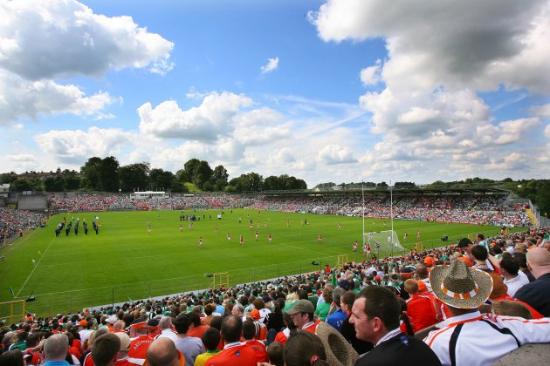Much of the debate around intercounty gaelic football at present, now we are in the off-season, has revolved around the 5 experimental rules proposed by the GAA’s Standing Committee on the Playing Rules. If approved, these rules would come into effect for the 2019 National Football League but not for the 2019 championship.
I’m very underwhelmed; being honest I’m very disappointed and hope these rules are not introduced.
Gaelic football in 2018 was often less than entertaining to watch. Going by these proposed new rules, it’s clear that those in charge want there to be more turnovers of possession, more long kicking to tall players and less possession-based football from now on. As the GAA has become more and more business-like, so has the focus on intercounty football as an “entertainment product” increased.
Handpass restriction: “To introduce a restriction of three consecutive passes of the ball with the fist or open hand by players of the team in possession.”
Sideline kick: “That the ball shall be played in a forward direction from the kick.”
Mark rule: “To extend the application of the Mark to the clean catching of the ball on or inside the 20m line from a kick delivered on or beyond the 45m line without it touching the ground.”
Sin-Bin: “The Penalty on the day for a Black Card Infraction or two Yellow Card Infractions – an ordering off for ten minutes in a Sin Bin.”
Kick-Out/Zoning: “For a kick-out, two players only from each team shall be positioned between the two 45m lines. The goalkeeper and a maximum of six players from each team shall be behind the respective 45m lines, until the ball is kicked. The ball from the kick-out shall travel beyond the 45m line before being played by a player of the defending team.”
There are two main reasons why gaelic football has evolved into what it currently is: poor enforcement of the playing rules by referees, and an increase in physical capabilities of players. The combination of these two has resulted in the game having fewer turnovers, more fouling from frustrated players and a lack of space on the pitch.
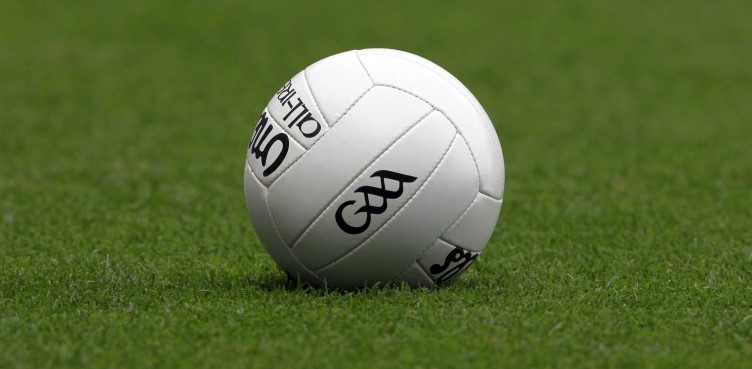
Handpass restriction: “To introduce a restriction of three consecutive passes of the ball with the fist or open hand by players of the team in possession”
Sideline kick: “That the ball shall be played in a forward direction from the kick.”
Possession
Gaelic football, like rugby or soccer, has evolved into a possession game. Once a team has possession they control the clock, they control scoring, and it is very easy to hold onto the ball as per the rules currently enforced. It is difficult, legally, to dispossess the player with the ball. The first two rules, regarding limiting consecutive handpasses and only playing sideline kicks forward, are a case tackling the end result without getting to the root of the problem. If less possession is what those who control gaelic football want, there are two very easy ways to do so.
The Tackle
The elephant in the room in gaelic football has always been about “defining the tackle”. When I was growing up there were two ways to gain possession. Play the ball with one hand and take it from an opponent, or make a fair physical challenge with the body causing the opponent to lose control of the ball. Both of these have been destroyed in the last 20 years. The physical challenge has been diluted and diluted to the point where shoulders or physical challenges are rare – they even bring about a cheer bigger than a goal at most games, such is the rarity of seeing a good physical hit. Second, playing the ball with the hand without being penalised has become more and more difficult.
My dad taught me to tackle, and for a forward I wasn’t bad. “You just wait until the guy with the ball goes to play it”, he explained, “and as soon as he does, tip it away. Remember, he has to play it within 4 steps. So use your feet to stay close and he’ll either overcarry, or he’ll play it and you’ll take it.” Quick feet and eyes on the ball. Easy.
Overcarrying
Sadly however, referees don’t enforce carrying rules and players routinely take more than the allowed amount of steps. It is manageable to shadow an opponent’s run for 4 steps; it is very difficult to do so when your opponent can take 10 steps. One assumes referees allow too many steps in an effort to reduce the number of times they blow the whistle and keep continuity in the game. Rather than encouraging play, however, this only makes tackles rarer and frustrates defenders into conceding frees: while referees let overcarrying go, in their own minds to have fewer frees, paradoxically they are encouraging more foul play and certainly more possession football.
Group Tackle
Something which has become very noticeable in any gaelic football match I’ve watched over the last few years is the prevalence of the group (swarm) tackle. It is not that defensive skills are reducing so players cannot dispossess an opponent on their own. No, rather it is that the group tackle is frequently rewarded. Watch what happens when a player is tackled by just one opponent and compare it to what happens when a player is tackled by several opponents at once. When a player is put under huge pressure by just one tackler, he will often win a free. Yet when three tacklers do the exact same thing to a player, that player will concede a free for overcarrying (even if he has not done so).
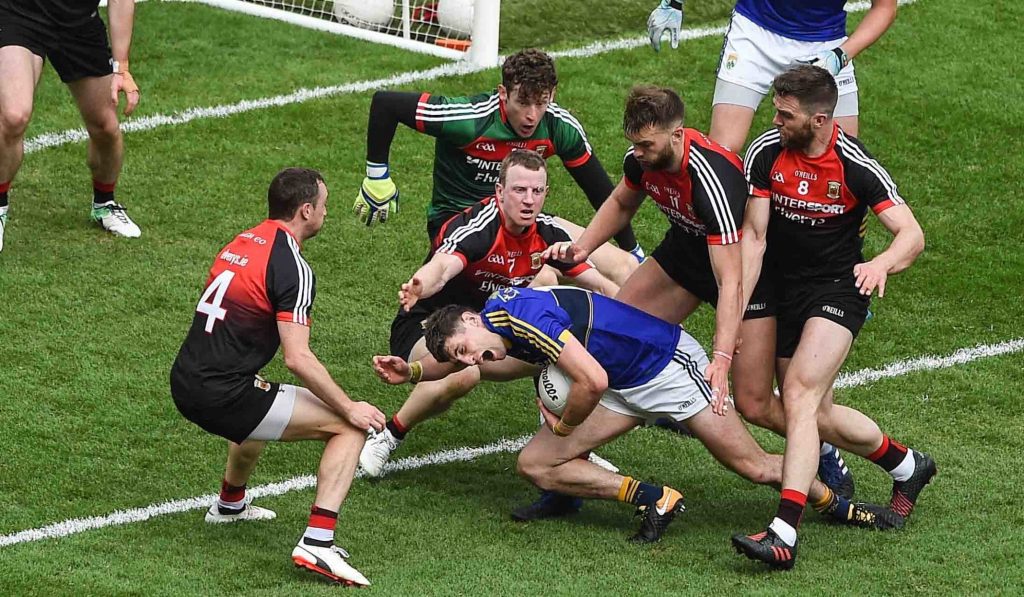
Group tackles are the safest way to gain possession as poor refereeing of tackle punishes 1v1 tackles
Believe it or not, massed defence is currently being encouraged by referees. Refereeing solely by the rules will fix it. Sometimes an individual tackler will foul, sometimes he won’t and sometimes a group tackle will and sometimes they won’t. There is a trend of rewarding the group tackle and penalising the individual tackle. Players and coaches will do what’s effective, and the group tackle is very effective as a result of this refereeing trend. This is encouraging massed defence.
Physicality
Physicality has been largely killed from the game. A well-timed, well-executed shoulder is one of the finest skills in the game. The rule makers and rule enforcers have done their best to kill off physical challenges, which is very sad. A shoulder to shoulder contest frequently results in a free or the ball-carrier throwing himself to the ground. Referees don’t seem to want to allow physical challenges or too much aggression. An attempt at a shoulder which isn’t absolutely perfectly times is likely to get a player sent off: as a result fewer players even try to make legal, physical challenges.
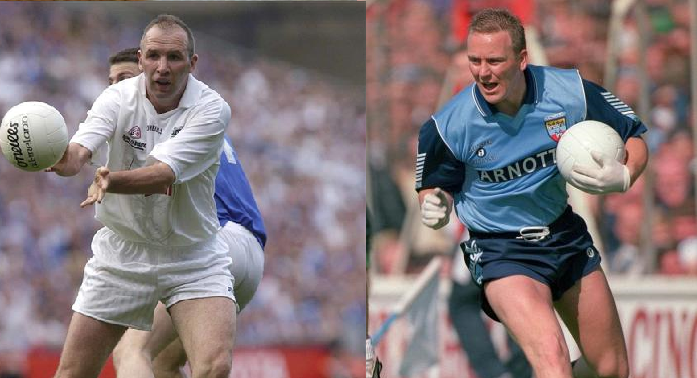
Two of the great centre backs, Glenn Ryan and Keith Barr
Growing up in the era I did, a centre back meeting a player running through with a well timed, legal hit was a joy. Centre backs like Keith Barr, Stephen O’Brien, Conor Counihan or Glen Ryan were excellent footballers who were also hard, physical stoppers at the heart of their teams. In my opinion, the removal of the physical holding centre back has in large part led to massed defences (and the “sweepers” so many hate). Physical challenges on ball carriers coming from midfield are a thing of the past, and so teams line up 3, 4 or 5 players in this area looking to swarm the ball carrier instead.
Handpasses and kicking sidelines forward may remove some of the possession aspects of the game, but these two rule changes entirely miss the point.
Long High Ball
The mark rule will reward big full forwards and kicking the ball long to them. People are sad to see the long, high ball gone from the game. But was this long, high ball really what we loved, is it what we long for? When I was growing up the forwards I looked at and admired were guys like Peter Canavan, Mickey Linden, Padraic Joyce, Declan Browne, Bernard Flynn, Colm O’Rourke, Mattie Forde, Maurice Fitzgerald, Colin Corkery, Stephen O’Neill, Steven McDonnell, Benny Coulter. Ask me would I rather watch a Kieran Donaghy at full forward or a Peter Canavan, and I’ll say Canavan every day of the week and twice on a Sunday. And you can swap in any of those other players I’ve named for Canavan. Skill, speed and accuracy are what I want to see in forwards, not big fellas catching marks. That’s Aussie Rules people should watch if that’s what they’re looking for.
Space
The mark rule change misses the point. Making the game about kicking again isn’t a case of forcing teams to do so, or creating rewards for it, it’s simply an issue of SPACE. What we are missing from the game is space in front of goal for skilful, fast, agile forwards to play in. Not big balls lumped in towards tall players. If there was space in front of goal, everyone would kick the ball. This rule will bring in tall full forward players, which I’m not in favour of. Creating space in front of goal, and all over the pitch for that matter, is what we need. How to do this? Not by forcing teams to do so, not by rewarding tall players who can catch balls lumped in, not by backcourt rules I’ve seen some mention and not by forcing players to hold positions with ridiculous zonal rules (like having to keep 4 men inside the 45 or other similar nonsense).

Space in attack leads to long kicking in front of full forwards and great scores. Creating space should be the priority.
Playing Numbers
There are just too many players on the field at present. 15 is too many. 15 players, in the physical condition they currently are in means there is zero space on the pitch, especially when you factor in a ball that, unlike hurling, can only travel about 50 metres accurately (at most). We are all told when we’re under-12 that “the ball moves faster than you ever will” – with current conditioning levels that gap is now minimal. Reduce the numbers on the field to 13 for each team and plenty of space will open up, letting players use the ball optimally (i.e. they will kick it more as it will make more sense to do so). There is no good reason I have ever heard for not reducing the number of players.
Three Yellows?
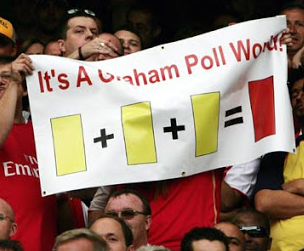
Three yellows. Madness.
I have never been a fan of the black card. But with these proposals you can get two yellows and you miss 10 mins? Then come back on and you’ll need a third yellow to be dismissed. Come on. A Sin Bin instead of a black card is not a bad option, but not in this form. Allow it to be introduced instead of the black card, or even better, instead of the black AND yellow card. So you are off for 10 with either black or yellow, then come back on and if you get any other card you’re off permanently. But two yellows, then a third? A poor idea in it’s current form.
The Kickout
As gaelic football is currently played, being a possession game, the kickout is the only time a team gets to contest possession. With this new rule only one kind of kickout will be allowed: a long ball past the ’45 to midfielders. I really enjoy watching high fielding from kickouts and personally like when the ball is delivered long to be contested. The GAA has already brought in the kickout mark which tries to encourage long kickouts. However this latest proposed amendment to the kickout rules goes too far.
Whoever has the best midfield and goalkeeper will win every game as they’ll win most possession. It’s as simple as that, and it’s a punishment for teams who don’t have strong fielding midfield players. The short kickout came into vogue with Cluxton who has made it an art, but it is used lots by smaller teams or teams with weaker goalkeepers. It concerns me the will for more and more big players to be rewarded in the game and this rule does that. From being a game where your team decides how best to win possession based on the strengths of your personnel, the game now becomes about who has the two best fielders. It is also worth noting that in a country where games are frequently affected by wind, even the best goalkeepers sometimes struggle to get the ball past the ’45.
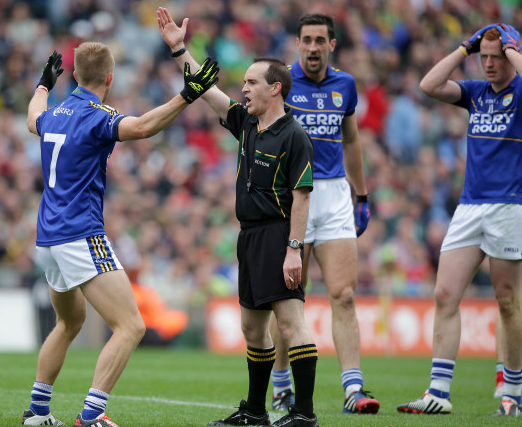
Poor refereeing has damaged gaelic football more than any tactic or rule
The Issues
Gaelic football has become a possession game. Teams prefer to carry the ball and use short passing to hold possession and advance the ball upfield rather than kicking it longer. Kicking longer is a risk because there is such limited space on the field due to playing numbers and the physical capabilties of those players. Physical challenges on ball carriers have been discouraged, and fairly tackling the ball with the hand has been also discouraged through normalised overcarrying. .
Root Causes & Solutions
The root cause is what we need to tackle, not the manifestation.
We want more long kicking: the GAA is trying to do this with both the carrot (the mark) and the stick (kickout rules). Opening up more space will organically lead to exactly what we want.
We want more turnovers: the GAA is trying to do this with the stick twice (handpass rule & sideline rule). Creating an environment where players can challenge for the ball when it’s in an opponent’s hands will again organically lead to the desired solution.
Kicking will be encouraged by making more space on the field. Reducing the playing numbers to 13 will open this space we need so much. Massed defences will cease to be an issue with reduced playing numbers. In tandem, allowing some physicality back into the game will create more turnovers we badly need. So too will more accurate refereeing by following the rule book more closely, specifically with regard to overcarrying. If the ball has to leave a player’s hands every 4 steps, we will see lots of legal challenges on the ball in one-on-one tackles, and more turnovers.

